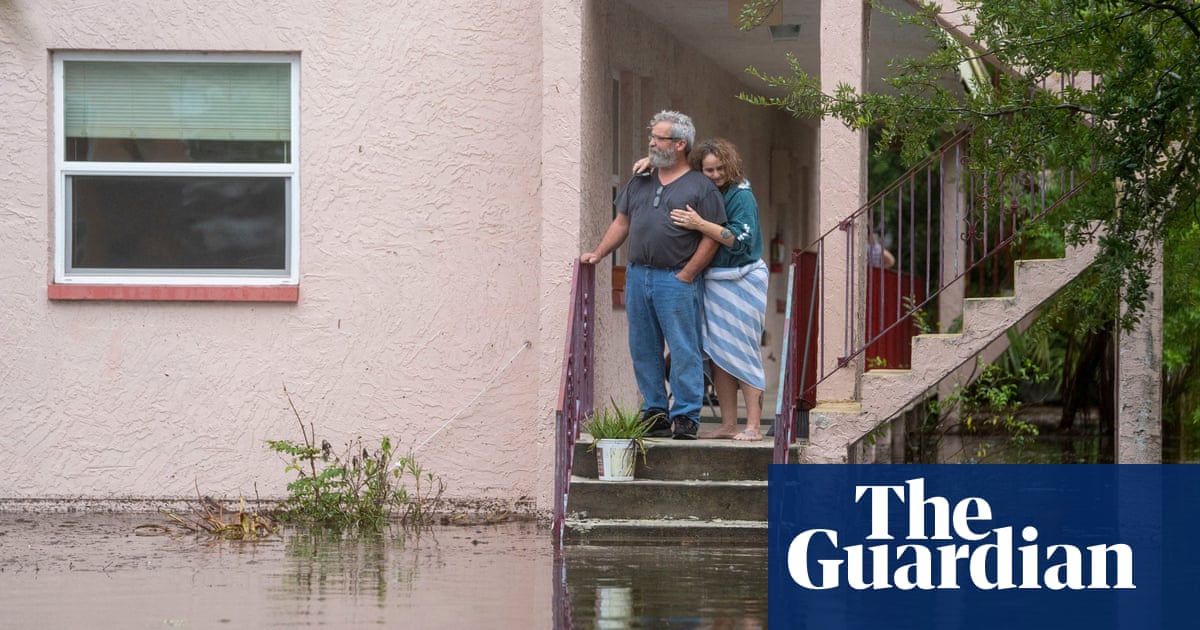
The US was battered by 20 separate billion-dollar climate and weather disasters in 2021, one of the most catastrophic climate years on record which led to at least 688 deaths, according to the annual report of the National Oceanic and Atmospheric Administration (Noaa).
Damage from the year’s 20 most costly disasters, which included thousands of wildfires burning across western states, frigid temperatures and hail storms in Texas, tornadoes in the south-east, and tropical storms saturating the east coast, totaled around $145bn.
This makes 2021 the third costliest extreme weather year on record, with four tropical storms – Elsa, Fred, Ida and Nicholas – accounting for just over half the total price tag.
The deadly mega-disasters were scattered throughout 2021 and hit communities from coast to coast, starting with flash floods and bomb cyclones in California and ending with Colorado’s most destructive ever wildfire, which tore through almost 1,100 homes and 6,000 acres (2,400 hectares), causing more than $10bn of damage.
Between 44% and 56% of the country was affected by drought during the course of 2021.
Overall, the US saw its fourth-hottest year on record fueled by historic highs in December (beating 2015) that produced spring-like temperatures on parts of the east coast. Ten states – Alabama, Arkansas, Kansas, Louisiana, Mississippi, Missouri, Nebraska, New Mexico, Oklahoma and Texas – also had their warmest December on record.
Across the country, people of color and low-income communities are being disproportionately affected by the toll and trauma of extreme weather events, which in many cases are directly attributed to global heating caused by greenhouse gas emissions.
Noaa’s report comes as Joe Biden attempts to resuscitate his Build Back Better bill which includes the country’s largest ever climate investment and without which experts say the US has no chance of meeting its pledge to cut greenhouse gas emissions to at least 50% below 2005 levels by 2030. The fossil-fuel friendly senator Joe Manchin’s opposition to the $1.75tn economic recovery and social welfare bill is holding up its passage through the Senate.
Failure to take radical action to curtail greenhouse gases will probably take its toll on a growing number of Americans as the costs – human and economic – of extreme weather and climate disasters are already escalating.
“The data highlights a worsening and undeniable trend that underscores the reality of how the climate crisis is already affecting every region of the country,” said Rachel Cleetus, policy director for the climate and energy program at the Union of Concerned Scientists (UCS). “We simply cannot adapt to runaway climate change … Fossil fuel companies and their allies shouldn’t be allowed to stand in the way of desperately needed climate action.”
Disaster tracking by Noaa shows that the average number of annual billion-dollar events over the past five years was 17.2 compared with just 5.3 during the 1990s. The staggering costs from the mega-disasters between 2017 and 2021 totaled almost $750bn.
Climate change has outpaced building regulations, which have played a significant role in the rising number and cost of mega-disasters, according to Adam Smith, an applied climatologist at Noaa.
“Much of the growth has taken place in vulnerable areas like coasts, river floodplains and the wildland urban interface. Vulnerability is especially high where building codes are insufficient for reducing damage from extreme events,” Smith said.
While the growing intensity and frequency of weather and climate disasters like extreme rainfall, extreme heat and drought are directly attributed to global heating, the links to tornadoes are still not fully understood
Still, 2021 was a very active tornado year with a record-shattering 193 in December – nearly double the previous high of 97 in 2002.
Another historic event was the mid-February freeze in Texas which left more than 200 dead and thousands without power and running water. Damages are estimated at $24bn, costing more than double the so-called storm of the century which stretched Canada to Honduras in March 1993.












